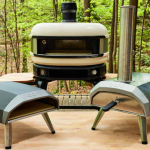Choosing the Right LED Strip Lights Manufacturer & LED Module Suppliers: A Practical Guide
In a world rapidly shifting toward energy-efficient lighting, LED solutions have become the go-to choice for businesses, designers, and engineers alike. Whether it’s for architectural lighting, signage, or ambient design, two components play a crucial role in building reliable and vibrant lighting systems: strip lights and modules. But behind every dependable lighting product stands a well-chosen manufacturing partner. This guide helps you understand what to look for when selecting one for your projects.
Why Choosing a Specialist Matters
Not all LED strips are created equal and neither are the companies that manufacture them. Working with a dedicated partner means you’re not just buying a product, but investing in years of technical development, quality control, and design refinement.
An experienced manufacturer brings more to the table than just competitive pricing. You’re also getting better control over product specifications, material consistency, and adherence to international standards like CE, RoHS, or FCC. These certifications affect the safety, performance, and longevity of your lighting installations.
If you’re developing lighting for a hotel lobby, or embedding strips into furniture or signage, the quality and reliability of each component matters. A good manufacturing partner understands that every use-case might demand something different: waterproof strips for outdoor setups, high-lumen output for displays, or flexible PCBs for curved surfaces.
What to Expect From a Reliable Partner
So how do you know if a manufacturer is up to the mark?
First, look at the range of LED strips they offer. Are they keeping up with evolving technology like COB (Chip-on-Board) LEDs or color-tunable options? A wide portfolio indicates an R&D-driven approach, which usually means higher product reliability.
Second, consider how transparent they are with technical specs. You want details about LED type, CRI (color rendering index), lumens per meter, input voltage, and lifespan not vague promises.
Midway through your research, it’s worth narrowing your list to companies with proven experience as a led strip lights manufacturer. This helps ensure you’re sourcing from those who specialize in production rather than resellers, which can make a significant difference in performance and lifespan.
Identifying Strong LED Module Suppliers
While strip lights are great for long runs and design lines, LED modules are your go-to for precision lighting think channel letters, light boxes, or architectural highlights. This is where dependable suppliers come into play.
Modules are often chosen for their compact size and targeted light output. But the wrong choice can mean poor color consistency, overheating issues, or even premature failure. Choosing the right supplier means looking beyond the catalog and asking how the product was designed, tested, and supported after delivery.
What to Look for in a Supplier
For LED modules, variety is a strong indicator of capability. A supplier offering different wattages, waterproofing levels, beam angles, and mounting options usually understands the specific needs of custom lighting projects.
Customization is another plus. Can the supplier adjust specifications like color temperature or wire length to meet your project’s demands? Flexibility often suggests a deeper knowledge of manufacturing, not just distribution.
In the middle of your evaluation, shortlist options that consistently rank as trustworthy led module suppliers with a focus on durability and consistent output. These are the kinds of partnerships that reduce risk in long-term projects.
When Components Must Work Together
Often, a single project requires both strip lights and modules. Imagine a retail space where ambient lighting creates a welcoming atmosphere (strip lights), while illuminated signage draws attention (modules). In such cases, you want both components to match in brightness, temperature, and power compatibility.
This doesn’t necessarily mean you need one company to do everything but choosing suppliers who are aware of industry standards and design integration can save you time during installation.
Quick Checklist for Supplier Selection
Here’s a simple checklist to help evaluate both manufacturers and module suppliers:
- Certifications like CE, RoHS, or UL
- Transparency in specs and testing reports
- In-house quality control systems
- Support after delivery
- Flexible lead times and international delivery
- Technical documentation and wiring guides
Making an Informed Decision
Selecting the right partners takes more than comparing prices. Ask for samples. Read technical documents. Evaluate warranty terms. Speak to their existing clients if possible.
The real cost of lighting isn’t just the upfront price it’s the downtime, replacements, or service calls you avoid by getting it right the first time.
Conclusion
Finding the right lighting components starts with asking the right questions. By narrowing your options and evaluating companies that specialize in either strip lights or modules, you’ll build a more dependable system overall.
With the right led strip lights manufacturer and carefully chosen led module suppliers, your projects can achieve both form and function without compromising on quality.











